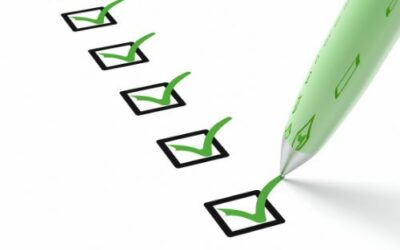
Your asset register is a key tool in your asset management operations. With an asset register, you get more visibility over what your assets are doing, who has them and where they are.
Now, you can use asset tracking software to maintain and update an asset register automatically, too, so you don’t even need to go into any spreadsheets and manually change things.
With asset tracking software, you simply need to scan asset tags to create a robust and transparent audit trail of where assets have been and whether they’ve been seen or not.
What Is An Asset Register?
In short, an asset register is a list of your company’s tools, equipment, and other forms of assets. You can create an IT asset register or a fixed asset register simply by populating your asset list with that type of equipment.
You can then use your asset list for tax, insurance, and accounting purposes to name a few. This is as an asset register is essentially just a list of equipment and critical data logged against that.
Spreadsheets used to be the gold standard for asset lists, but with the creation of software and apps, quickly became outdated. This is as maintaining a list of all of your assets and critical data related to them quickly gives rise to a wide range of issues. These will result in gaps in data and accountability issues.
What Should You Add To Your Asset Register?
So, when you’re creating a list of assets, what should you add to it? The short answer is that it’ll depend on your business and the problems you’re trying to solve with an asset register.
Therefore, if you’re working in a school, you’ll want a school asset register of IT equipment and whiteboards, for example. You may want to create a list of your IT assets, too, for IT asset management purposes if you’re in any business.
Or, you can create fixed asset tracking operations for clearer tax and insurance returns and more visibility over how your assets are depreciating.
The best place to start is by looking at what problems you need to solve. If it’s related to lost or misplaced assets, your asset register may be industry-specific or relevant to your business’s particular assets. If you’re hoping to improve your fixed asset tracking processes, you can do so by only adding fixed assets to your asset register. And if you want to track your employees’ assets and accesses, you can build an IT asset register.
Using Asset Tags
Once you’ve built your asset register, the next step is to monitor it and maintain it. The fastest way you can do this is with the use of asset tags. With asset tags, you can view and edit asset data simply by scanning a QR code or barcode.
Every time an asset’s tag is scanned, the last seen GPS location updates and the user who scanned the tag, alongside the time of the scan, is all logged. This means you get an audit trail that you can run reports on and maintain.
Every scan also opens up an asset’s profile, meaning if you spot a lost laptop in your building and want to see who is responsible for it, all you need to do is scan the tag.
This helps you keep your asset register relevant, usable and up to date, helping you avoid risks such as ghost and zombie assets.
itemit’s Asset Tracking Software
itemit’s asset tracking software gives you the ability to do all of this and more. With itemit, you can view asset data and manage reports of this information.
itemit is easy to use and effective at helping you track your assets, meaning you can keep your asset records correct and up to date with ease.
You can scale itemit and use it to track any different type of asset, meaning that no matter the asset register you’re creating, you can do so using itemit.
To find out more, you can contact the team at team@itemit.com or fill in the form below to start your very own 14-day free trial.

Try itemit
Choose a better way to track
your assets.
Start your free 14-day trial now!

Keep Learning
itemit Blog
Tips, guides, industry best practices, and news.
Why Having An Accurate Asset Register Is Important
Why is having an accurate asset register so important and how can it help with equipment tracking? Read this post now to find out!
What To Include In Your Fixed Asset Register
What should you include in your fixed asset register and how can you make it work for you? Read this post now to find out!
What Exactly Is An Asset register?
What exactly is an asset register and will your chosen asset register format offer you everything you need? Read this post to find out!




